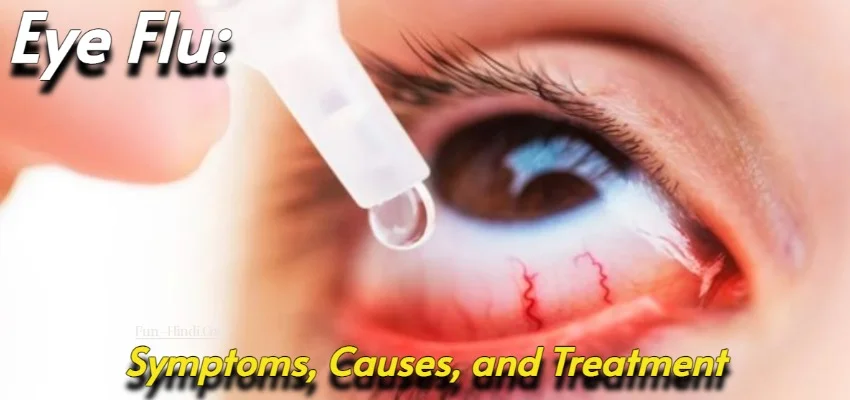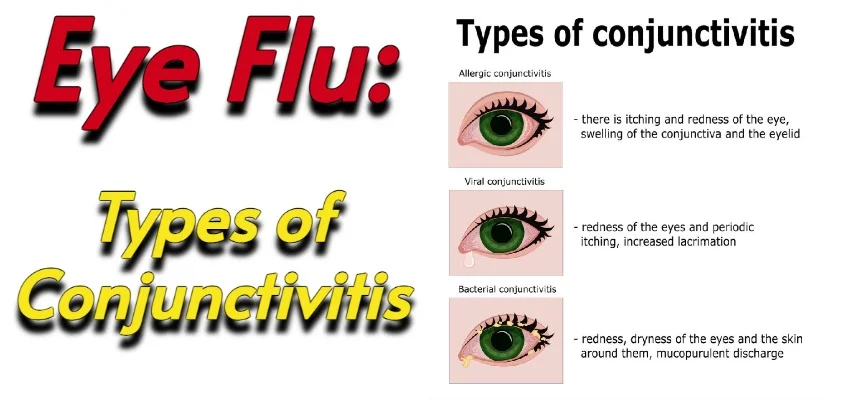Eye flu, also known as conjunctivitis or pink eye, is a common eye condition that affects people of all ages. It is an inflammation of the conjunctiva, the thin, transparent layer covering the whites of the eyes and the inner surface of the eyelids.
This condition can be caused by viruses, bacteria, allergies, or irritants, and it can spread easily from person to person. In this article, we will delve into the symptoms, causes, and treatment options for eye flu.
👉Erindale Health Centre: Your One-Stop Shop for Healthcare
Symptoms of Eye Flu
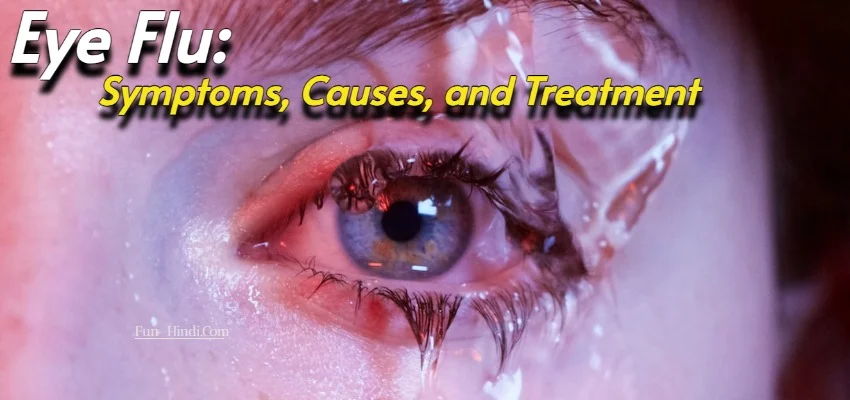
Eye flu can manifest with various symptoms, which can differ depending on the cause of the infection. The main symptoms include:
- Redness: The white part of the eye may appear reddish or pinkish due to inflammation.
- Watery eyes: Excessive tearing is a common symptom, and the eyes may feel constantly watery.
- Itching and irritation: The eyes may feel itchy and irritated, leading to a persistent urge to rub them.
- Discharge: Eye flu can cause a thick, yellowish, or greenish discharge that may crust around the eyes, especially after sleep.
- Swelling: The conjunctiva may become swollen, making the eyes appear puffy.
- Sensitivity to light: People with eye flu may experience sensitivity to light, known as photophobia.
- Blurry vision: Vision may be temporarily affected, causing blurry or hazy vision.
👉Abacus Care Health Insurance: What You Need to Know
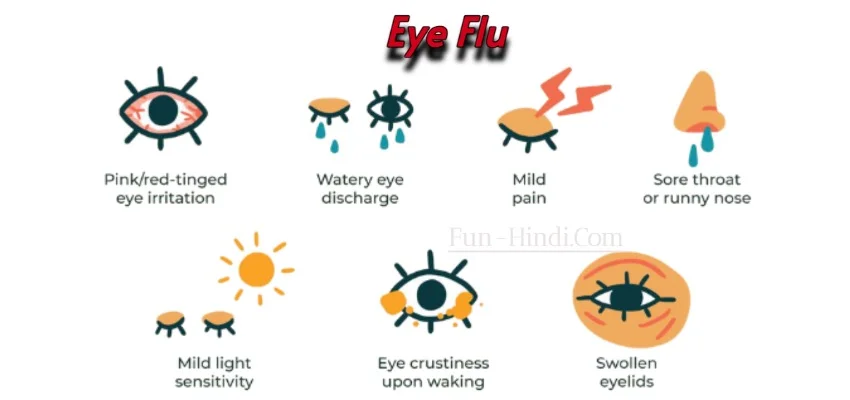
Common Symptoms:
- Redness: One of the most noticeable symptoms of eye flu is the redness in the whites of the eyes.
- Itchiness: The affected eye(s) may feel itchy, leading to the urge to rub them frequently.
- Discharge: Eye flu may cause a sticky or watery discharge to accumulate around the eyes, especially after waking up.
- Tearing: Excessive tearing is also common in conjunctivitis cases.
- Blurry Vision: In some instances, eye flu can cause temporary blurred vision due to the inflammation.
👉Cinnamon health benefits & Cinnamon Powder
Common Causes of Eye Flu

- Viral Infections: Viruses, such as adenovirus and herpes simplex virus, are the leading causes of viral conjunctivitis. It is highly contagious and can spread through respiratory droplets or by touching infected surfaces.
- Bacterial Infections: Bacterial conjunctivitis is usually caused by Staphylococcus aureus, Streptococcus pneumoniae, or Haemophilus influenzae. It spreads through direct contact with infected hands or objects.
- Allergic Reactions: Allergens like pollen, dust mites, pet dander, or certain medications can trigger allergic conjunctivitis. It is not contagious.
- Irritants: Chemicals, smoke, fumes, or foreign objects in the eye can lead to irritant conjunctivitis. This type is also not contagious.
👉Health Benefits and Side Effects of Olive Oil
Causes of Eye Flu:

- Viral Infections: Viruses, such as the common cold virus or adenovirus, are a leading cause of viral conjunctivitis.
- Bacterial Infections: Bacterial conjunctivitis is often caused by the same bacteria responsible for strep throat and staph infections.
- Allergies: Allergens like pollen, dust, and pet dander can trigger allergic conjunctivitis.
- Irritants: Chemicals, smoke, or foreign objects that come into contact with the eyes can cause irritant conjunctivitis.
Diagnosis and Treatment
If you experience symptoms of eye flu, it is essential to consult an eye doctor for an accurate diagnosis. The doctor will examine your eyes and may take a sample of eye discharge for lab testing to determine the cause of the infection.
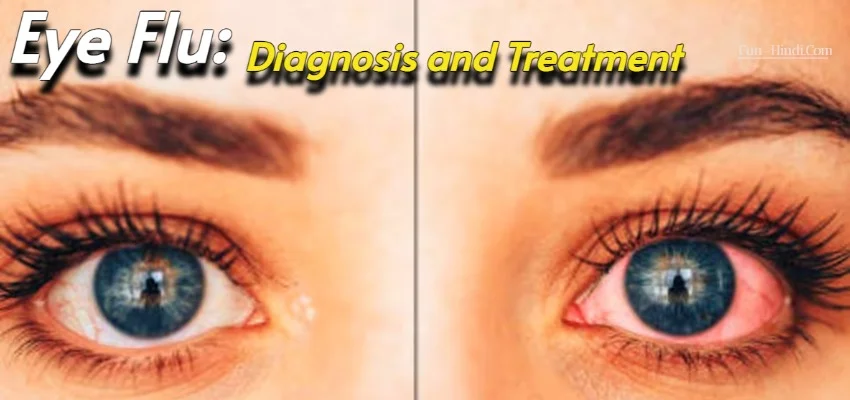
Treatment options vary depending on the underlying cause:
- Viral Conjunctivitis: Viral eye flu is self-limiting and typically clears up on its own within 1-2 weeks. Applying warm compresses and using artificial tears can help alleviate discomfort. In severe cases, antiviral medications may be prescribed.
- Bacterial Conjunctivitis: Antibiotic eye drops or ointments are commonly prescribed to treat bacterial conjunctivitis. It’s crucial to complete the full course of medication even if symptoms improve.
- Allergic Conjunctivitis: Avoiding allergens is the primary step in managing allergic eye flu. Antihistamine eye drops or oral medications may provide relief from symptoms.
- Irritant Conjunctivitis: Flushing the eyes with clean water is the first step in managing irritant conjunctivitis. If symptoms persist, consult an eye specialist for further evaluation and treatment.
👉Amla Health Benefits and Properties in Indian Gooseberry
Prevention:
- Hygiene: Regularly wash your hands and avoid touching or rubbing your eyes to prevent the spread of germs.
- Avoiding Sharing: Refrain from sharing personal items like towels, makeup, and eye drops, as this can transmit the infection.
- Eye Protection: When dealing with irritants or chemicals, wear appropriate eye protection to minimize the risk of conjunctivitis.
- Allergen Management: If you have allergic conjunctivitis, try to minimize exposure to allergens, especially during peak seasons.
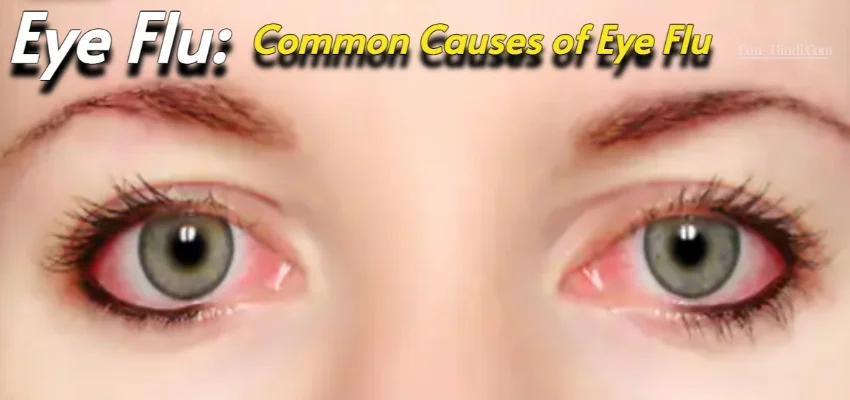
Treatment Options:
- Artificial Tears: Lubricating eye drops can help soothe the eyes and reduce dryness and discomfort.
- Antibiotics: Bacterial conjunctivitis may require antibiotic eye drops or ointments prescribed by a doctor.
- Antihistamines: For allergic conjunctivitis, antihistamine eye drops can alleviate symptoms.
- Warm Compresses: Applying a warm compress to the eyes can help reduce inflammation and relieve discomfort.
- Avoiding Contact Lenses: If you wear contact lenses, avoid using them until the infection clears up.
Preventive Measures
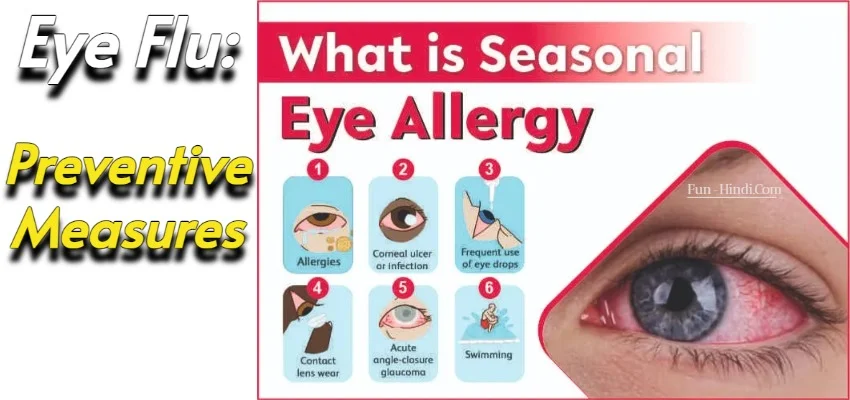
To reduce the risk of contracting or spreading eye flu:
- Wash Hands Frequently: Regularly washing hands with soap and water can prevent the spread of infections.
- Avoid Touching Eyes: Refrain from touching or rubbing your eyes, especially with unwashed hands.
- Personal Items: Do not share personal items like towels, makeup, or contact lenses.
- Hygiene Practices: Maintain good hygiene, especially if you are in close contact with someone who has eye flu.
- Stay at Home: If you have eye flu, avoid going to work, school, or public places until you are no longer contagious.
👉Coconut water health benefits and side-effects
When to See a Doctor:
- If symptoms persist or worsen after a few days of home treatment.
- If you experience severe eye pain or sensitivity to light.
- If you have a weakened immune system or a pre-existing eye condition.
Conclusion
Eye flu is a common eye condition that can cause discomfort and irritation. Identifying the underlying cause is essential for proper treatment. Whether it’s viral, bacterial, allergic, or irritant conjunctivitis, seeking medical advice can help manage symptoms effectively.
By following preventive measures, we can protect ourselves and others from the spread of eye flu and maintain good eye health.
FAQ’s
What is eye flu?
Eye flu, also known as pink eye, is when the eye becomes red and swollen due to an infection or irritation.
What are the symptoms of eye flu?
Symptoms of eye flu include red and itchy eyes, increased tear production, and a discharge from the eye that can be clear, yellow, or green. It may also cause blurry vision and sensitivity to light.
How is eye flu spread?
Eye flu can spread when you touch your infected eye and then touch something else, or when you come into close contact with someone who has it.
How long does eye flu last?
The duration of eye flu depends on the cause. Viral eye flu can last for 1 to 2 weeks or even longer, while bacterial eye flu usually improves within a week with proper treatment. Allergic eye flu may last as long as the allergen is present.
Can eye flu be treated?
Yes, eye flu can be treated. Viral eye flu often goes away on its own, while bacterial eye flu can be treated with antibiotics. Allergic eye flu can be managed with allergy medications.
How can I prevent eye flu?
To prevent eye flu, wash your hands often and avoid touching your eyes. Stay away from people who have pink eye, and don’t share personal items like towels or makeup. If you wear contact lenses, make sure to clean and disinfect them properly.
What are the complications of eye flu?
Eye flu can sometimes lead to severe eye infections or corneal ulcers, which can affect your vision.
When should I see a doctor for eye flu?
You should see a doctor if you have symptoms of eye flu that don’t improve after a few days, or if you experience severe pain or changes in your vision. People with a weakened immune system should also seek medical attention.
What is the difference between eye flu and pink eye?
There is no difference between eye flu and pink eye; they are two different terms for the same condition – conjunctivitis.
Can eye flu be prevented in children?
Yes, eye flu can be prevented in children by teaching them to wash their hands regularly and avoid touching their eyes with dirty hands.
What are the signs and symptoms of bacterial eye flu?
Signs of bacterial eye flu may include redness, swelling, a thick yellow or green discharge, and crusts on the eyelids or lashes.
Signs of viral eye flu can include redness, watery discharge, and sensitivity to light.
What are the signs and symptoms of allergic eye flu?
Signs of allergic eye flu may include redness, itching, tearing, and swollen eyelids.
What are the treatment options for eye flu?
Treatment for eye flu depends on the cause. Viral eye flu usually doesn’t need specific treatment. Bacterial eye flu can be treated with antibiotics, and allergic eye flu can be managed with allergy medications.
What are the complications of eye flu?
Complications of eye flu can include severe eye infections, corneal ulcers, and in rare cases, damage to vision.
How can I prevent the spread of eye flu?
To prevent eye flu from spreading, practice good hygiene, avoid touching your eyes with unwashed hands, and stay away from people with pink eye. Avoid sharing personal items like towels and cosmetics, and clean your contact lenses properly.
How did you like this information and post?
If you liked this post Understanding Eye Flu: Symptoms, Causes, and Treatment or got to learn something, please share this post on Social Networks like WhatsApp, Facebook, Instagram, Telegram, Pinterest, Do share on Twitter, Google+ and other social media sites. Also subscribe my YouTube Channel.
|| Thanks |❤|…


